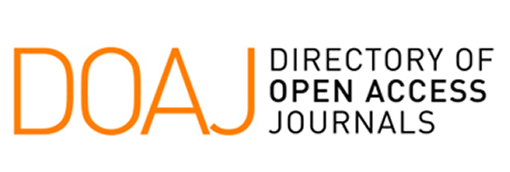Penerapan Lean Six Sigma untuk Meningkatkan Efisiensi Proses Inbound dan Outbound di Gudang PT XYZ
Keywords:
lean six sigma, inbound, outbound, pergudangan, value stream mappingAbstract
The operational efficiency of the warehouse is a crucial factor in supporting the smooth running of the supply chain, especially in the inbound and outbound processes. The objective of this research is to analyse the root cause of the problem and reduce waste in the form of waiting time, which has a significant impact on the performance of PT XYZ's warehouse. This research applies the Lean Six Sigma approach, with tools in the form of Value Stream Mapping (VSM) to map the process flow, as well as the implementation of 5S as a proposed improvement to improve process order and work efficiency. The results showed that the high waiting time was caused by a lack of staff training, limited transport equipment, a continued reliance on manual processes and an inefficient warehouse layout. Suggested solutions included sorting goods by frequency of use, organising the warehouse layout, cleaning the warehouse regularly and developing clear SOPs. Implementation of the improvement recommendations resulted in a 51.38% increase in process cycle efficiency. This research shows that the Lean Six Sigma approach is effective in improving the efficiency of the warehouse process in a sustainable way.
References
[1] F. Fadhilah, R. Firdiansyah Suryawan, L. Suryaningsih, and L. Lestari, “Teori Gudang Digunakan Dalam Proses Pergudangan (Tinjauan Empat Aspek),” J. Transp. Logistik, dan Aviasi, vol. 1, no. 2, pp. 153–156, 2022.
[2] N. Atikah, S. N. Parhatiwi, A. D. Pertiwi, E. F. Utami, and Firman, “Identification of waste: Downtime in the outpatient prescription services at the pharmacy installation of Rumah Sakit Islam Siti Hajar Mataram,” J. Ilm. Farm., vol. 17, no. 2, pp. 107–115, 2021.
[3] R. R. Nurdin, S. Hadi, S. Miru, and Syamsuddin, “Application of inbound and outbound logistics in frozen food cece shop business in hammer city,” J. Econ. Bus. Account., vol. 7, no. 6, pp. 1223–1239, 2024.
[4] I. S. Rahayu, H. H. Purba, and B. Susetyo, “Peningkatan Kualitas Menggunakan Pendekatan Lean Six Sigma Untuk Konstruksi Gedung Di Indonesia,” Konstruksia, vol. 14, no. 2, p. 73, 2023.
[5] V. Gaspersz, Lean Six Sigma For Manufacturing and Service Industries. Jakarta: Gramedia Pustaka Utama, 2007.
[6] Mu’adzah, T. Latifah Ahmad, and A. Nita Kusumawati, “Systematic Literature Review: Implementasi Metode 5S Pada Perusahaan Manufaktur,” J. Teknol. dan Manaj. Ind., vol. 1, no. 2, pp. 31–39, 2020.
[7] P. I. Piay, H. J. Kristina, and C. O. Doaly, “Pengurangan Jumlah Produk Cacat Pada Produksi Glasses Box Dengan Metode Lean Six Sigma,” J. Ilm. Tek. Ind., vol. 9, no. 2, pp. 81–92, 2021.
[8] N. Nelfiyanti, D. Saputra, and R. A. M. Puteri, “Penerapan Value Stream Mapping Tools dalam Meminimasi Pemborasan Proses Packing Part Disc di line Servis,” JISI J. Integr. Sist. Ind., vol. 10, no. 1, p. 9, 2023.
[9] A. Oktavia and D. Herwanto, “Analisis Pengendalian Kualitas Produk Menggunakan Pendekatan Statistical Quality Control (SQC) di PT. Samcon,” Ind. Inov. J. Tek. Ind., vol. 11, no. 2, pp. 106–113, 2021.
[10] M. Lenawati, D. Setiawan, and W. Rindra Kurniawan, “Menentukan Prioritas Audit Sistem dan Teknologi Informasi Berdasarkan Root Cause Analysis Menggunakan Pareto Chart dan Fishbone,” Fountain Informatics J., vol. 8, no. 1, pp. 15–20, 2023.
[11] A. Sofiana and E. Sanggala, “Meminimalisirkan Gagal Antar di Kantor Pos Mojokerto dengan Metode DMAIC,” J. Media Tek. dan Sist. Ind., vol. 5, no. 1, p. 1, 2021.
[12] P. Moengin and N. Ayunda, “Lean Manufacturing untuk Meminimasi Lead Time dan Waste agar Tercapainya Target Produksi (Studi kasus: PT. Rollflex Manufacturing Indonesia),” J. Tek. Ind., vol. 11, no. 1, pp. 77–92, 2021, doi: 10.25105/jti.v11i1.9699.
[13] D. Febrina, S. Agustina, and F. Trisnawati, “Alat Pendeteksi Kelembapan Tanah dan Penyiram Tanaman Otomatis Berbasis Arduino Uno Menggunakan Soil Moisture Sensor Dan Relay,” J. Ilm. Mhs. Kendali dan List., vol. 2, no. 2, pp. 57–65, 2021.
[14] N. E. Ismail, A. N. Sutomo, and M. Muchtaridi, “Analisis Minimalisasi Waste pada Waktu Produksi untuk Meningkatkan Efektivitas Produksi,” Indones. J. Pharm. Sci. Technol., vol. 10, no. 1, pp. 31–36, 2023.
[15] D. R. Nabilla and A. Hasin, “Analisis Efektivitas Penerapan Standard Operating Procedure (SOP) Pada Departemen Community & Academy RUN System (PT Global Sukses Solusi Tbk),” Nabila, Dian Ratna Hasin Al, vol. 01, no. 06, pp. 58–75, 2022.
Downloads
Published
Issue
Section
License
Copyright (c) 2024 Avril Firda Amelia, Moch. Tutuk Safirin (Author)

This work is licensed under a Creative Commons Attribution 4.0 International License.












